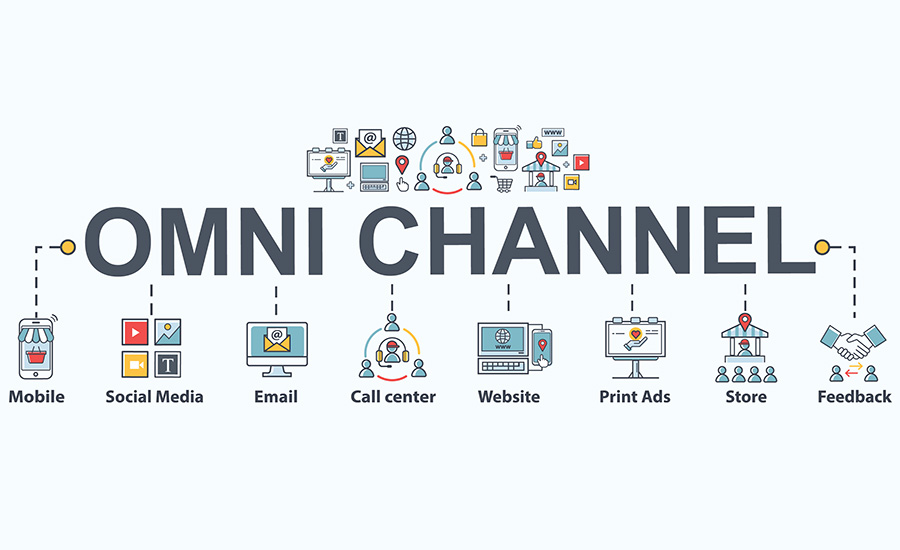The fitness industry has taken a hit over the last couple of years as the COVID-19 pandemic forced people indoors and businesses to close. As fitness retailers and organizations try to get back to some kind of normal, acquiring and retaining customers is top of mind. Customer engagement strategies for fitness businesses are proven ways to boost customer retention. They help fitness brands build solid followings and stronger client relationships.
These strategies may include an omnichannel approach to outreach and a greater focus on the customer experience: 73% of people believe the customer experience is an important factor in making a purchase, and 80% of customers say that the customer experience is just as important as a company’s products or services.
Making up for the lost ground is, without a doubt, a herculean task, but not impossible. This article is for every business owner and marketer associated with the fitness industry, who wishes to make an impact with some actionable, spot-on strategies. Take a look at how you can improve your conversion rates and boost your retention with the 13 most effective customer engagement strategies for your business.
Table of Contents
- > How COVID-19 Has Affected the Fitness Industry
- > 13 Effective Customer Engagement Strategies for Fitness Businesses
- > Strategy #1: Boost Omnichannel Customer Engagement
- > Strategy #2: Know the Difference Between Customer Service and Customer Engagement
- > Strategy #3: Integrate an Omnichannel Chat that achieves both
- > Strategy #4: Leverage the Power of Email
- > Strategy #5: Use SMS to Its Fullest
- > Strategy #6: Use Automations to Inspire Customers
- > Strategy #7: Create a Strong Customer Loyalty Program
- > Strategy #8: Get Even More Personal With Personalization
- > Strategy #9: Map Out the Customer Journey
- > Strategy Strategy #10: Collect Customer Feedback
- > Strategy #11: Stay Active on Social Media
- > Strategy #12: Nail the Sales Process
- > Strategy #13: Track the Most Important Customer Engagement Metrics
- > Mix the Strategies to Thrive
How COVID-19 Has Affected the Fitness Industry
Fitness industry businesses such as equipment retailers, gyms, studios, and weight-loss centers have seen major changes because of COVID-19. Physical workout locations have seen significant drops in customers and subscriptions.
Revenue for the industry fell by 58% at the end of 2020 when compared to 2019, 17% of clubs permanently closed, and 44% of fitness employees lost their jobs. Clients no longer wanted to work out near others, and businesses had to close, at least temporarily, as pandemic restrictions and safety regulations went into place in early 2020.
It isn’t all bad news for the fitness industry, however. Retailers for at-home workout gear and devices like activity trackers have seen sales skyrocket during the pandemic. In March 2020 alone, Adobe found that exercise equipment sales jumped 55% because more people wanted to work out at home and avoid crowds.
Even still, retailers and gyms need to improve their customer engagement approach to hang on during the uncertain times businesses are still experiencing today. People may be more open to working out in shared spaces, but they still need to be inspired and engaged to fully embrace a return to the gym. Fortunately, there are simple engagement tactics businesses can implement that are made even easier with a complete customer engagement platform.
13 Effective Customer Engagement Strategies for Fitness Businesses

The fitness industry spans wellness centers, sports organizations, gyms, studios, and fitness retailers, all of which have their own unique goals related to attracting and retaining customers. However, there are still general customer engagement strategies for fitness businesses that will help them create a better customer experience. Here are 12 of the most effective tactics.
Strategy #1: Invest in Omnichannel Customer Engagement

Omnichannel engagement strategies help fitness businesses create a seamless experience between a customer’s channels. Mastering and linking each touchpoint allows retailers to track key behaviors, helping create a more accurate picture of the person behind the data. Customer personas lead to more personalized, engaging experiences.
Why it works: Instead of giving a customer disjointed interactions from one outlet to the next, an omnichannel approach ensures that the brand is consistent in tone and messaging. This is crucial since nine out of 10 customers demand a seamless omnichannel experience across all channels. Retailers can also deliver more personal experiences when they engage people across each of their channels, including social media, email, SMS, and more.
Strategy #2: Know the Difference Between Customer Service and Customer Engagement
Many businesses mistakenly think that customer service is the same thing as customer engagement. When a brand provides a great support experience, it may feel like its work is done when it comes to delighting the customer. However, customer engagement is concerned with the actual experience of the customer, which goes beyond one single interaction. Brands should consider how the customer sees them holistically beyond the help desk.
Why it works: Showing customers that the company understands their pain points throughout their journey makes them feel more appreciated. This goes beyond solving a problem for someone over the phone on a one-off basis.
Strategy #3: Integrate an Omnichannel Chat that achieves both

Live chat and chatbots are the easiest and fastest means to solve common questions in real-time. The benefits of a live chat functionality and the use cases exceed the mundane brand-customer communication practices, making this simple implementation a no-brainer. Omnichannel chats have the ability to increase customer acquisition with new leads while boosting the company’s retention rates and the team’s productivity.
Why it works: Apart from streamlining the workload of the customer service department, an omnichannel chat will act as an additional channel that will store and analyze data. With a platform that connects all the available channels into an all-in-one solution, the generation of a complete customer profile will prove significant for any brand. Using the archived logs for smart automations and deep segments will skyrocket the company’s customer service and engagement.

Strategy #4: Leverage the Power of Email

Even with the modern dependence on social media, email is still as relevant as ever. Key email metrics can help businesses track customer engagement activity, including open rates, clicks, unsubscribes, deletions without opening, and saves. Additionally, engagement tactics like personalization and email drip campaigns are effective at keeping customers engaged throughout their buying journey.
Why it works: Almost all users (99%) check their email every day, and some even check it 20 times per day. Over half of consumers check their email before doing anything else in the morning. Email is an effective way to reach people where they are on a daily basis with content that will inspire them to take a step forward and convert.
Strategy #5: Use SMS to Its Fullest

Today’s customers are mobile. They communicate often via SMS messaging and have now started to interact with their favorite brands this way. In fact, 64% of consumers want businesses to contact them via text message more often, and 75% want to get texts with special offers. Fitness organizations should ensure they’re engaging customers like never before by sending out offers, confirming appointments, and re-engaging cold leads in this format.
Why it works: Texting is a personal way to reach a customer. People now have their phones on them all day long, and there’s an extremely high chance that a customer will read a text soon after receiving it. In fact, consumers are 134% more likely to respond to a text than an email.
Strategy #6: Use Automations to Inspire Customers
Automations are now a must for fitness industry marketers. Automated reminders and follow-ups can be sent across channels, whether they be push notifications, SMS texts, or emails. They can be sent out when a customer converts, schedules an appointment or takes an action like changing their personal information in their membership account. Drip campaigns can also be created and scheduled using automations to save time.
Why it works: Great customer engagement strategies for fitness depend on fast response times and consistent attention. Automated campaigns help teams accomplish just that, with technology doing a lot of the work for them.
Strategy #7: Create a Strong Customer Loyalty Program
A customer loyalty program is a win-win for businesses and customers. Such programs drive sales and customer retention while providing benefits to customers that make them feel seen and heard. Loyal supporters may receive benefits such as discounts, rewards, VIP access, and other perks for buying equipment or visiting the gym.
Why it works: Fitness customers want to feel understood and valued. When they receive something positive, just for being a customer or taking a specific action, they are more likely to trust the brand.
Strategy #8: Get Even More Personal With Personalization
Personalization is driving online sales in today’s digital world. Customers need to be inspired during their journey, and it takes a lot more than trying to sell them something. They often turn to the internet looking for an answer before they’re even close to being ready to buy. Fitness businesses should focus on delivering customers something of value with more personalized content. This takes knowing the customer’s desires and pain points and centering content around those points.
Why it works: 80% of consumers are more likely to make a purchase when a company offers them a personalized experience. People want to feel recognized by personal, relevant content that speaks to what they’re going through, and fitness and weight loss can be personal subjects, to begin with.
Strategy #9: Map Out the Customer Journey
Brands should know each touchpoint in the buyer’s journey. Which moments matter the most and get people to convert? People will interact with a company long before they actually make a purchase, and those interactions are important stepping stones. Moments That Matter (MTM) is a marketing concept that ensures marketers are inspiring customers at those crucial moments with the right content and information. This happens only when the complete customer journey is outlined and understood.
Why it works: Customers see plenty of content online each day. When they are surprised and inspired by relevant, personal messaging, they’re more likely to follow a brand. Mapping the customer journey goes hand in hand with the ability to deliver personalized messaging and the right brand voice.
Strategy #10: Collect Customer Feedback

Fitness businesses need to stay flexible and open to change to be there for their customers, especially during stressful times like the COVID-19 pandemic. The best way to understand what people want is to simply ask them. Effective customer feedback tactics include delivering surveys after someone makes a purchase, monitoring the Net Promoter Score (NPS), and asking for feedback from followers on social media. Even a one-question survey, such as one asking whether a customer would recommend the brand to a friend or family member, can tell a company a lot about their experience and engagement level.
Why it works: When customers can share their opinions, they feel like the brand is listening to them and values their opinion. Companies can gain invaluable data about specific interactions, new products and services, and a lot more with the right feedback system in place.
Strategy #11: Stay Active on Social Media

More people were working out at home during the pandemic, and they were also online and on social media a lot more. It’s more important than ever for fitness brands to meet their ideal audiences where they are: on Facebook, Twitter, Instagram, YouTube, LinkedIn, and TikTok. Businesses should pay attention to where prospects are spending their time online and post informative, valuable content that will resonate with them. Polls and questions are effective ways to engage customers on social media.
Why it works: 54% of social media browsing is now related to product research. Customers want to interact with brands they support on social media just like they would anywhere else. Reaching people in this format can feel fun, inspiring, and personal. Fitness businesses need to just make sure that they are using a consistent voice and design so they remain recognizable.
Strategy #12: Nail the Sales Process
Customer engagement isn’t reserved for just the marketing team. The sales team can take advantage of these customer engagement strategies for fitness to further inspire people to take the leap. When selling products or services, team members should take the buyer persona into account, consider the user experience from each and every touchpoint, and be as accommodating as possible. Customer satisfaction scores will help the sales team identify areas of strength and weakness.
Why it works: Marketing and sales must work together to create a complete customer experience. If one area falls behind, the customer could easily slip out of the sales funnel and go to a different fitness brand. Aligning sales to the same personalization values and brand voice will allow customers to have the most consistent, reliable experience with the organization.
Strategy #13: Track the Most Important Customer Engagement Metrics

With all the best intentions and feedback, brands still may not know exactly how all their engagement efforts are panning out. Setting up a system to manage the most important key performance indicators is a must. Important customer engagement metrics include NPS, customer lifetime value, customer satisfaction score, conversion rate, churn rate, user activity, session time, visit frequency, and bounce rate.
Why it works: Fitness marketers need to know the real insights behind all the effort. Collecting data about which messages are working, which platforms are most effective, and which of the above strategies bring in the most business is crucial to scaling a fitness business.
Mix the Strategies to Thrive
Every fitness business will have different needs and priorities. Most of the time, these strategies will work best when mixed and matched with others. Each organization should first create a list of goals and then select the customer engagement strategies for fitness businesses that will help them reach their desired outcomes.
By testing more strategies and tracking key customer engagement metrics, brands can figure out what works and what doesn’t. This trial-and-error approach helps boost engagement and saves time and money in the long run. Then, fitness businesses can unlock higher growth rates. To get started with better customer engagement strategies for fitness businesses, book a free 30-minute customer engagement consultation call with the team at ContactPigeon, an award-winning omnichannel customer engagement platform.

Let’s Help You Scale Up






